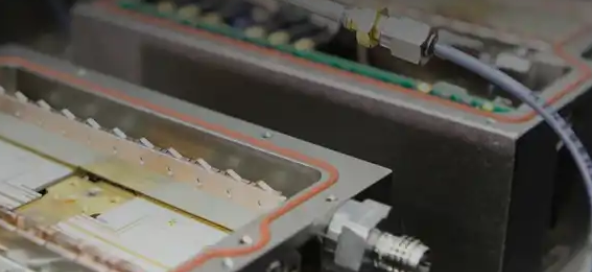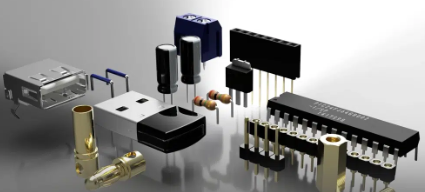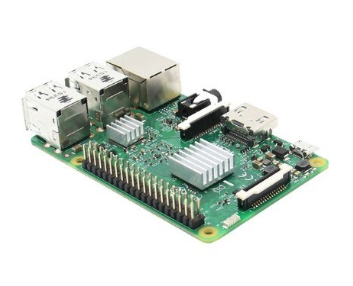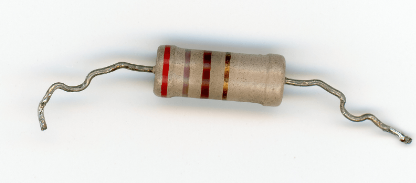- Ameya360 Component Supply Platform >
- Trade news >
- Why is burn-in testing necessary for electronics?
Why is burn-in testing necessary for electronics?
Once a PCB is assembled, it’s very important to take necessary steps to ensure top-notch quality. To do that, manufacturers use several techniques, and burn-in testing is one of them. In this article, you’ll get to know everything related to burn-in testing and why it’s so important in the electronics industry.

What is Burn-in Testing in the Electronics Industry?Burn-in testing is one technique that many reputed manufacturers use to test their PCBs during the manufacturing process. It stresses a PCB against several benchmarks to ensure that it’s fit and safe for use by the end user.
Since end-users don’t know anything about the technical aspects of electronics gadgets, a failing PCB can cause fatal accidents in the worst-case scenario. To eliminate such possibilities, a PCB is stressed for highest possible quality through burn-in testing.
Common Reasons for Component Failure During Burn-in Testing1.Manufacturing Fault
If there’s any manufacturing defect in a PCBA, such as solder bridging, less solder mask, etc., it’ll cause a component to fail during burn-in testing and your PCB maker will get to know about it.
2.Thermal Stress
When your tester will apply high temperature stress, or thermal stress to the PCBA, the components on the chip will expand and contract. If there’s any soldering issue, the soldering joints will open up which will tell us that the component has failed.
3.Voltage Overstress
If the components are supplied with more power than their rating, they’ll fail during burn-in testing.
4.Thermal Cycling
PCBAs go through constant heat and cooling cycles, which we also call thermal cycling. During burn-in testing, a thermal cycling is applied explicitly, which can cause components to fail.
5.Mechanical Stress
A mechanical stress, such as physical stress to the PCBA might be applied during testing on purpose, which can cause components to fail. Vibrations and shocks shouldn’t impact high-quality PCBAs, though.
6.Component Mismatch
It’s possible to place incorrect components in the circuit, which causes a component mismatch. For example, using incorrect resistance, capacitance, etc.
What Are the Functions of Burn-in Testing?
1.Defects Detection
Manufacturers use burn-in testing to find out any faults or defects during the manufacturing process.
2.Quality Assurance
By finding and eliminating the defects in the PCBA through burn-in testing, manufacturers can guarantee top-notch quality assurance in their products.
3.Validation of Design & Materials
If the burn-in testing passes, it means that the PCB design and the raw materials are fit for end-user consumption. That’s why burn-in testing is used.
4.Comply With Regulations
Sometimes, it’s important for the PCBA makers to do burn-in testing to comply with various government norms and regulations, or else they cannot sell untested PCBs in certain regions.
Also read: PCB Defects and How to Solve Them
What Are the Benefits of Burn-in Testing?●Through burn-in testing, you can figure out all the defects in your PCB that’ll help you avoid chaos later on.
●By burn-in testing, you can simulate the usage of your PCB in extreme conditions, so you can learn how well it’ll perform in such conditions.
●Lots of PCB makers have started opting for burn-in testing because of highly reliable results and analysis reports that it can create.
●Those makers who thrive on quality can rely on burn-in testing, which is a cheap and cost efficient way to ensure high-quality products.
●By performing burn-in testing, PCB makers can give a confidence to their end users that these PCBs are perfectly safe for use and they don’t have to worry about any potential hazards.
Different Types of Burn-in Testing1.Temperature Burn-in
The makers keep the PCB at high temperature for a long time, so that the PCB can age quickly. This way, you can identify if there are any potential damages arising due to high temperature.
2.Voltage Burn-in
In this testing, the PCB is supplied more power than its normal rating to find out how the PCB will react to high voltage. This way, you can figure out any possible voltage-related failures if you use incorrect power adapter.
3.Combined Stress Testing
This is a hybrid testing method, where the tester will apply high voltage, high temperature, mechanical stress, etc., all at once. This way, you can do several testing in one go.
4.Thermal Cycling Burn-in
The PCB in this testing goes through regular cycles of extremely high and extremely low temperatures, so that it deteriorates. This way, you can find out how tough your PCB is.
5.Overvoltage Testing
This is somewhat similar to voltage burn-in, but here the components are applied current for a short time. It’s just to see if the components can withstand acute high voltage supplies.
Applications of Burn-in Testing1.In the defense sector, the burn-in testing is very important because defense equipment will go through heavy mechanical stress and high temperature stress. There’s no way you can compromise on quality of defense equipment, so burn-in testing is important there.
2.Medical devices need to have PCBs that have went through burn-in testing, because any device failing during a critical surgery or operation will definitely cause fatal accidents. That cannot be borne!
Online messageinquiry
- Week of hot material
- Material in short supply seckilling
| model | brand | Quote |
|---|---|---|
| CDZVT2R20B | ROHM Semiconductor | |
| TL431ACLPR | Texas Instruments | |
| BD71847AMWV-E2 | ROHM Semiconductor | |
| MC33074DR2G | onsemi | |
| RB751G-40T2R | ROHM Semiconductor |
| model | brand | To snap up |
|---|---|---|
| BU33JA2MNVX-CTL | ROHM Semiconductor | |
| TPS63050YFFR | Texas Instruments | |
| ESR03EZPJ151 | ROHM Semiconductor | |
| STM32F429IGT6 | STMicroelectronics | |
| IPZ40N04S5L4R8ATMA1 | Infineon Technologies | |
| BP3621 | ROHM Semiconductor |
- Week of ranking
- Month ranking
Qr code of ameya360 official account
Identify TWO-DIMENSIONAL code, you can pay attention to


Please enter the verification code in the image below:


























